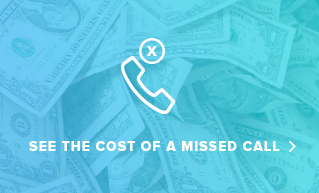It would be an understatement to say that the COVID-19 pandemic created a unique set of challenges for businesses around the world. Practically overnight, business owners were forced to contend with longer wait times, delayed deliveries, and staffing limitations. Three years later, the impacts of COVID-19 can still be felt. The labor shortage persists – many companies are still struggling to find and retain reliable employees. As a result, the customer experience has suffered.
The world was forever changed by the pandemic. Businesses are still attempting to do more with less. Many are curious to learn how call center services can help during labor shortages. If you’re eager to level up your customer service offerings and navigate the challenges of a post-COVID landscape, an answering service may be the answer.
Impact of Labor Shortage on Business Operations
The labor shortage has had a significant impact on the productivity and efficiency of businesses across industries. With fewer employees available to work, businesses are struggling to meet their usual workload. Too often, this results in reduced output and longer lead times. The impact on customers is palpable; longer wait times, delayed deliveries, and poor service quality have all become normalized. The lack of available staff also places a burden on existing employees, who must take on additional responsibilities, leading to burnout and reduced job satisfaction. In some cases, businesses are forced to limit their operating hours or reduce services to manage their reduced workforce, further reducing productivity and efficiency. Even when a skeleton crew manages to shoulder the increased responsibilities, small business labor shortage impacts can be felt behind the scenes.
High turnover rates are another factor to consider. Finding and hiring new employees is a time-consuming, expensive process. Businesses must invest resources in job postings, recruiting, interviewing, and training new employees, all of which can be costly. High turnover rates can also lead to lower employee morale, resulting in lower job satisfaction, which can impact employee productivity and quality of work. Businesses may also have to pay for unemployment insurance or severance packages, which can further increase costs. The impact of labor shortage on the hospitality industry and solutions aren’t always clear, but there is a course forward.
Strategies for Workforce Management in Times of Labor Shortage
In times of uncertainty, businesses must adopt innovative strategies to maintain productivity. A focus on employee retention is an excellent place to start. By offering competitive wages and benefits packages, flexible work arrangements, and opportunities for skill development and advancement, businesses can foster a positive work environment for all. This same energy can be channeled into the recruitment process. Job searchers are eager to work for companies that offer excellent benefits and a chance at advancement. While the term labor shortage might sound frightening, the reality is that there are plenty of excellent candidates on the market – they’re just waiting for the right opportunity.
It’s not enough to recruit and retain employees, though. To find long-term success, an organization must offer opportunities for growth. Training and development can go a long way to help your team prepare for the unexpected. Of course, as your employees become more experienced and highly trained, it’s only fair to compensate them for their efforts. There’s truly no better investment you can make in your organization.
How Answering Services and Virtual Assistance Can Help Businesses During Labor Shortage
While the aforementioned strategies are excellent ways to invest in your team for the long haul, they don’t necessarily work overnight. Stemming the tide of inbound calls while you also juggle onboarding and training new employees is a real challenge. That’s why many companies are using answering services to handle increased call volume during labor shortages. An answering service is the ideal solution for handling increased call volume for both the short and long term.
An answering service can provide many of the same services a full-time, in-house receptionist would. From appointment scheduling to message taking and order placing, call center services can integrate into your organization seamlessly. By outsourcing these functions, businesses prioritize the customer experience while freeing up their employees to focus on other critical tasks. Virtual assistance offers flexibility, scalability, and cost-effectiveness – all of which are essential during the labor shortage.
Essential Support for Businesses During the Labor Shortage
Improving customer experience during labor shortages with answering services is easier than you might expect. Professional virtual receptionists can integrate seamlessly into your organization, adapting your policies, procedures, and preferred vocabulary overnight. In fact, many callers may never realize they’re speaking with a third-party answering service. Inbound calls are taken with the same stellar service and quality support you would offer if you had the time.
Inbound calls aren’t the only service these professionals provide. They can also make outbound calls to schedule appointments, confirm reservations, or follow up with customers. This can help reduce wait times and streamline your business processes. Because virtual receptionists work around the clock to deliver support 24 hours a day, you can head home for the night with confidence that your callers are in good hands. 24/7 answering service support can help you and your team gain a healthier work/life balance without abandoning your customers when they need you most.
Bilingual support answering services can also prove instrumental to your customer experience. When callers have the option to speak to an agent in their native language, they’re instantly more at ease. Bilingual services help ensure that your customers feel heard and understood, which can lead to increased satisfaction and loyalty. It also makes your services accessible to a wider range of customers. In today’s global marketplace, offering bilingual support can give you a competitive advantage by setting you apart from other businesses that do not offer this service. This can help attract new customers and retain existing ones. Multilingual support during labor shortages with call center services is truly essential.
Industry-Specific Impacts of Labor Shortage
The effects of the labor shortage have rippled through every industry. Here are some of the ways your field may be impacted:
Healthcare
The labor shortage has had a significant impact on the medical industry, including staffing shortages, increased workload, and increased demand. With fewer staff available to provide care, the quality of care that patients receive may be compromised. This can lead to longer wait times, lower patient satisfaction, and even medical errors. Addressing the labor shortage will require a concerted effort from healthcare facilities, government agencies, and educational institutions to attract and retain workers and ensure that patients receive the care they need. Medical answering services can help lift some of the pressure off of healthcare workers.
Property Management
The labor shortage has also had a direct impact on the property management field. Companies are struggling to find enough qualified maintenance staff to keep up with the demand for their services. This means longer wait times for repairs and maintenance, leading to decreased rates of tenant satisfaction and retention. Property managers are shouldering more work – they have less time and resources to devote to answering tenant inquiries or resolving issues. Addressing the labor shortage in the property management sphere may require creative solutions. Property management answering services are a great option for organizations looking for administrative support.
Small Business
Even during the healthiest of economic times, many small businesses rely upon a skeleton crew. Post-pandemic, many mom-and-pop organizations are struggling to recover. With fewer workers available, small businesses may struggle to meet production targets or provide the same level of service to their customers. This can result in reduced productivity and lower revenue. Existing staff may need to take on more responsibilities and work longer hours. This can lead to increased stress and burnout, which can reduce productivity and increase turnover. Productivity, labor costs, workforce management, and growth potential are all affected. Small business labor shortage impacts are undeniable, but answering services can help make up the difference.
Hospitality
Anyone who has dined out or stayed in a hotel recently can tell you first-hand about the impacts the labor shortage has had on the hospitality industry. Housekeeping, kitchen staff, and front-of-house staff are minimal, resulting in long wait times and less-than-stellar service. Some businesses have reduced their hours or limited their offerings. With fewer workers available to help, existing staff struggle to get everything done. Lower customer satisfaction has become the norm – but it doesn’t have to be this way. A hospitality answering service can take the administrative side of the business off the plates of overworked employees. Instead, callers are treated to helpful, friendly support any time they dial their favorite hotel or restaurant.
The New Normal
The effects of the labor shortage are likely to be felt for years to come. Businesses have a unique opportunity to rise head and shoulders above their competition by offering stellar customer experiences. People are shopping around for the best service, rates, and products than ever before. Great customer service shines brighter nowadays – take this as an opportunity to win over new clients and keep them coming back time and time again. Of course, the only way to do this is by working with the right partner.
Our U.S. based team is ready to fill in the gaps of your particular labor shortage by answering calls 24 hours a day, seven days a week. Each of our employees is highly trained and highly experienced in the art of the customer experience. They work from customized call scripts that emulate your existing customer service offerings – or build on them to create an experience that’s better than ever.
Our services are especially helpful for understaffed teams. If you and your colleagues frequently find yourselves juggling multiple tasks and struggling to meet customer expectations, our inbound call-answering services may provide the relief you need. Imagine how much more you might accomplish in a day if you weren’t being constantly interrupted by the ringing of the telephone!
Try MAP Today for Free
We know times are tight. If your business is eager to deliver quality customer experiences but you’re finding it more challenging than ever to do so on a budget, why not give MAP Communications a try? We offer affordable plans at every price point, allowing you to navigate the future of customer service without breaking the bank.
We’re even offering a free trial for new users who are intrigued by our offerings but uncertain about how MAP will fit into your organization. We’re confident that after seven days of our live answering service, your team will be reassured and even excited at the prospect of outsourcing inbound calls. With your calls handled, you’ll gain the free time necessary to truly over-deliver on customer expectations in person. While we can’t entirely resolve the employee shortage, our call-answering services are sure to provide some much-needed relief for your team!
Ready to sign up for the trial? Click here and answer a few simple questions. We’ll be in touch shortly to set you up with our live answering services, free for an entire week!
Here are some related articles you might be interested in:
Nationwide vs Local Answering Service: Which is Best?
Eight Qualities and Skills to Look For in a Great Receptionist
5 High Impact Tips to Help Your Sales Team Close More Business




